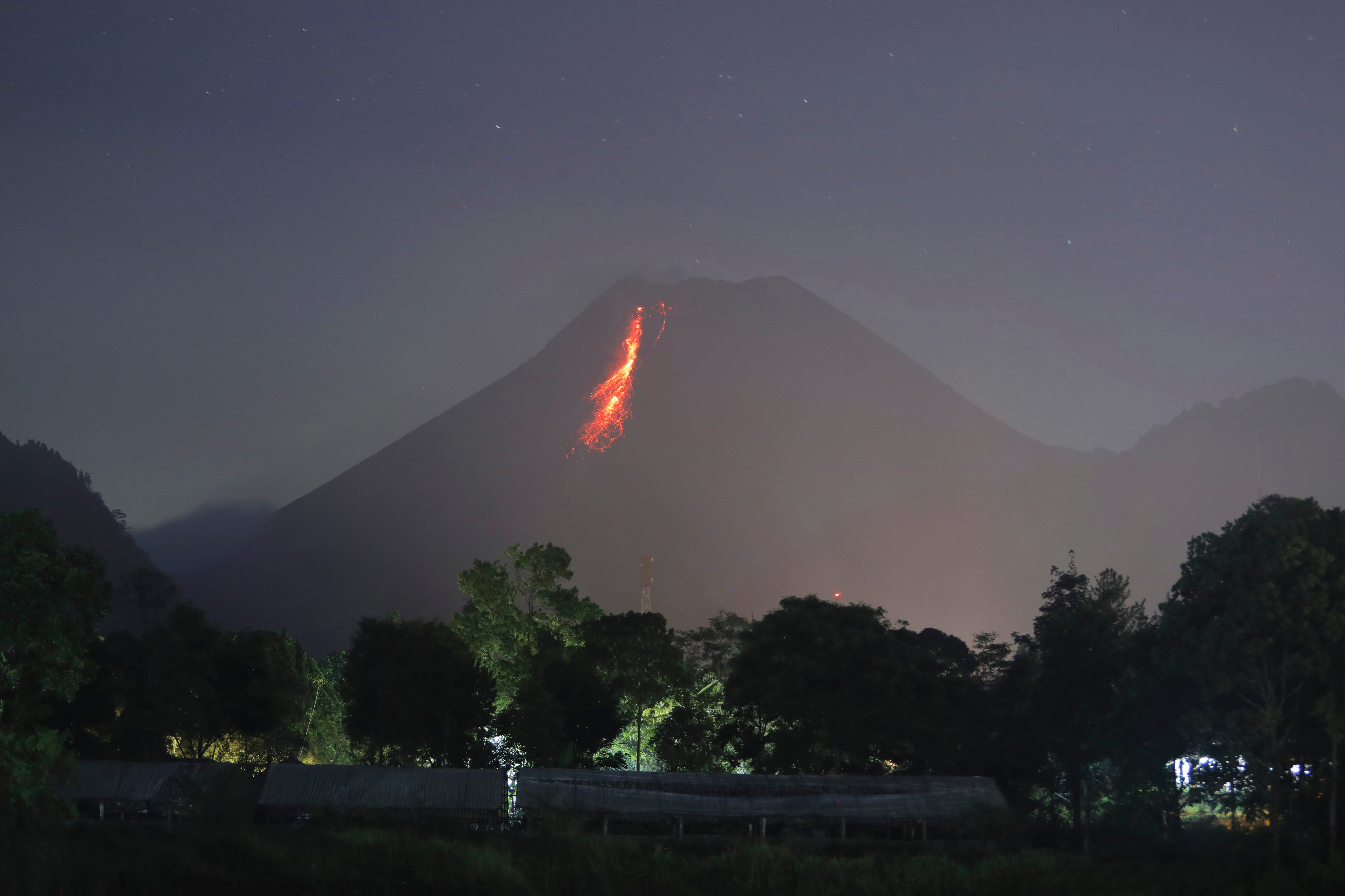Indonesian volcano unleashes river of lava in new eruption
Indonesia’s most active volcano has erupted with a river of lava and searing gas clouds flowing down its slopes

Your support helps us to tell the story
From reproductive rights to climate change to Big Tech, The Independent is on the ground when the story is developing. Whether it's investigating the financials of Elon Musk's pro-Trump PAC or producing our latest documentary, 'The A Word', which shines a light on the American women fighting for reproductive rights, we know how important it is to parse out the facts from the messaging.
At such a critical moment in US history, we need reporters on the ground. Your donation allows us to keep sending journalists to speak to both sides of the story.
The Independent is trusted by Americans across the entire political spectrum. And unlike many other quality news outlets, we choose not to lock Americans out of our reporting and analysis with paywalls. We believe quality journalism should be available to everyone, paid for by those who can afford it.
Your support makes all the difference.Indonesia’s most active volcano erupted Wednesday with a river of lava and searing gas clouds flowing 1,500 meters (4,900 feet) down its slopes.
It was the Mount Merapi’s longest lava flow since authorities raised the volatile volcano's danger level in November, said Hanik Humaida, the head of Yogyakarta’s Volcanology and Geological Hazard Mitigation Center.
The alert level was being maintained for now at the second-highest level, she said, and people should stay out of the existing 5-kilometer (3-mile) danger zone around the crater as the local administrations in Central Java and Yogyakarta provinces closely monitor the situation.
The 2,968-meter (9,737-foot) volcano is on the densely populated island of Java and near the ancient city of Yogyakarta. It is the most active of dozens of Indonesian volcanoes and has repeatedly erupted with lava and gas clouds recently.
Merapi's last major eruption in 2010 killed 347 people.
Indonesia, an archipelago of 270 million people, is prone to earthquakes and volcanic activity because it sits along the Pacific “Ring of Fire,” a horseshoe-shaped series of seismic fault lines around the ocean.